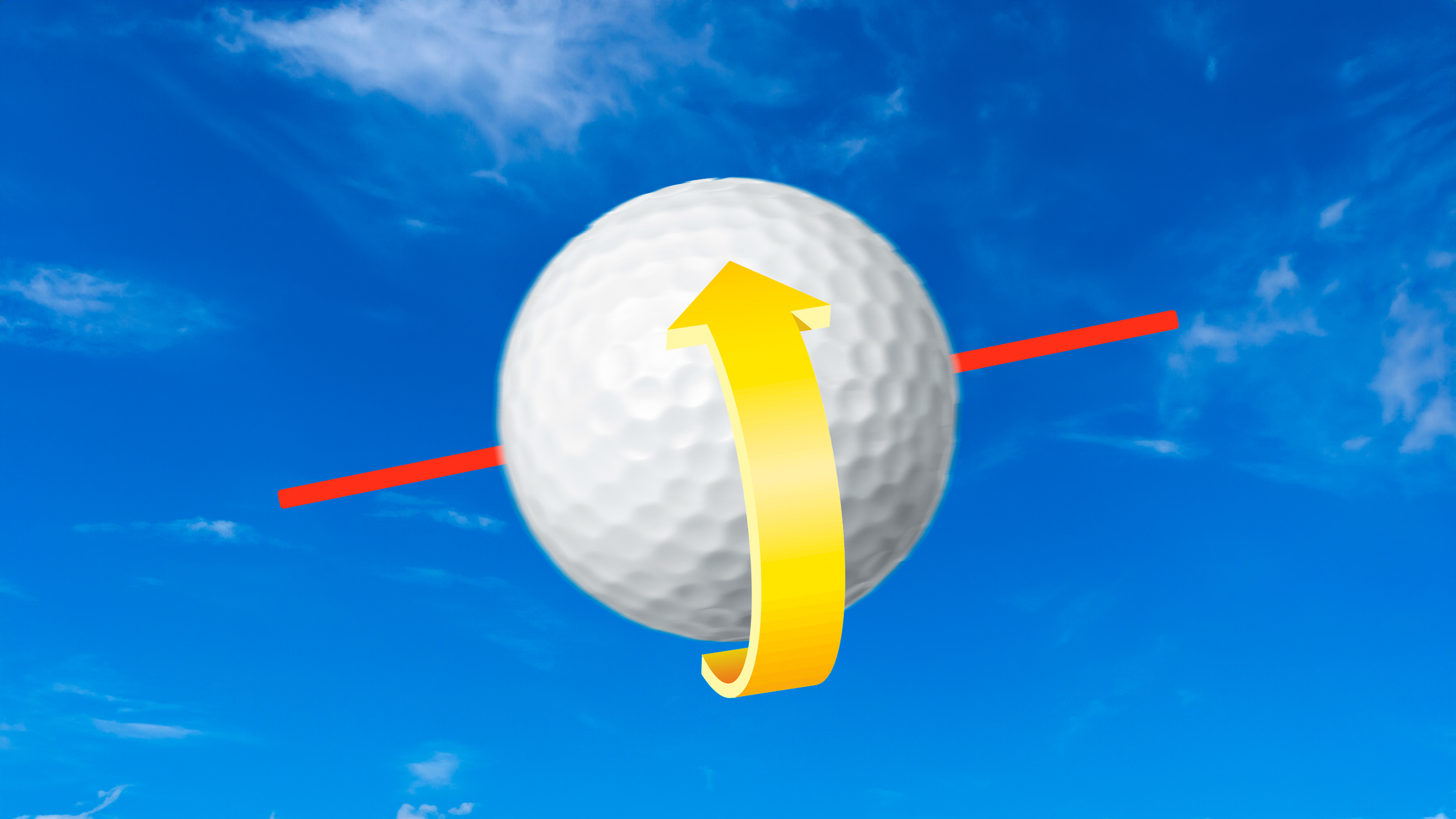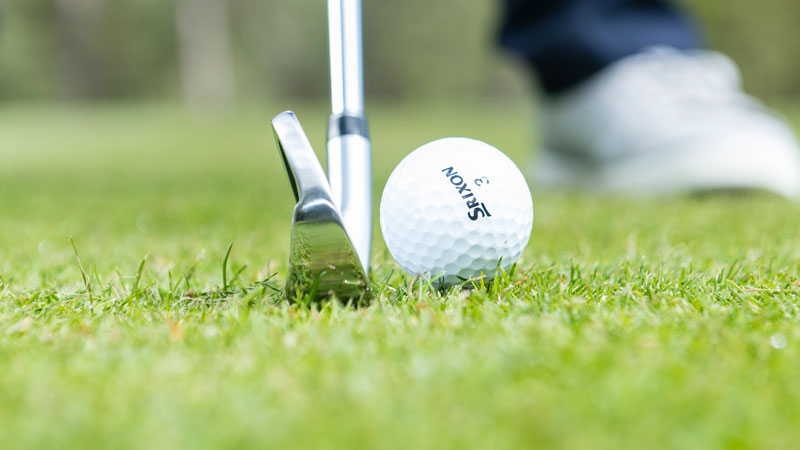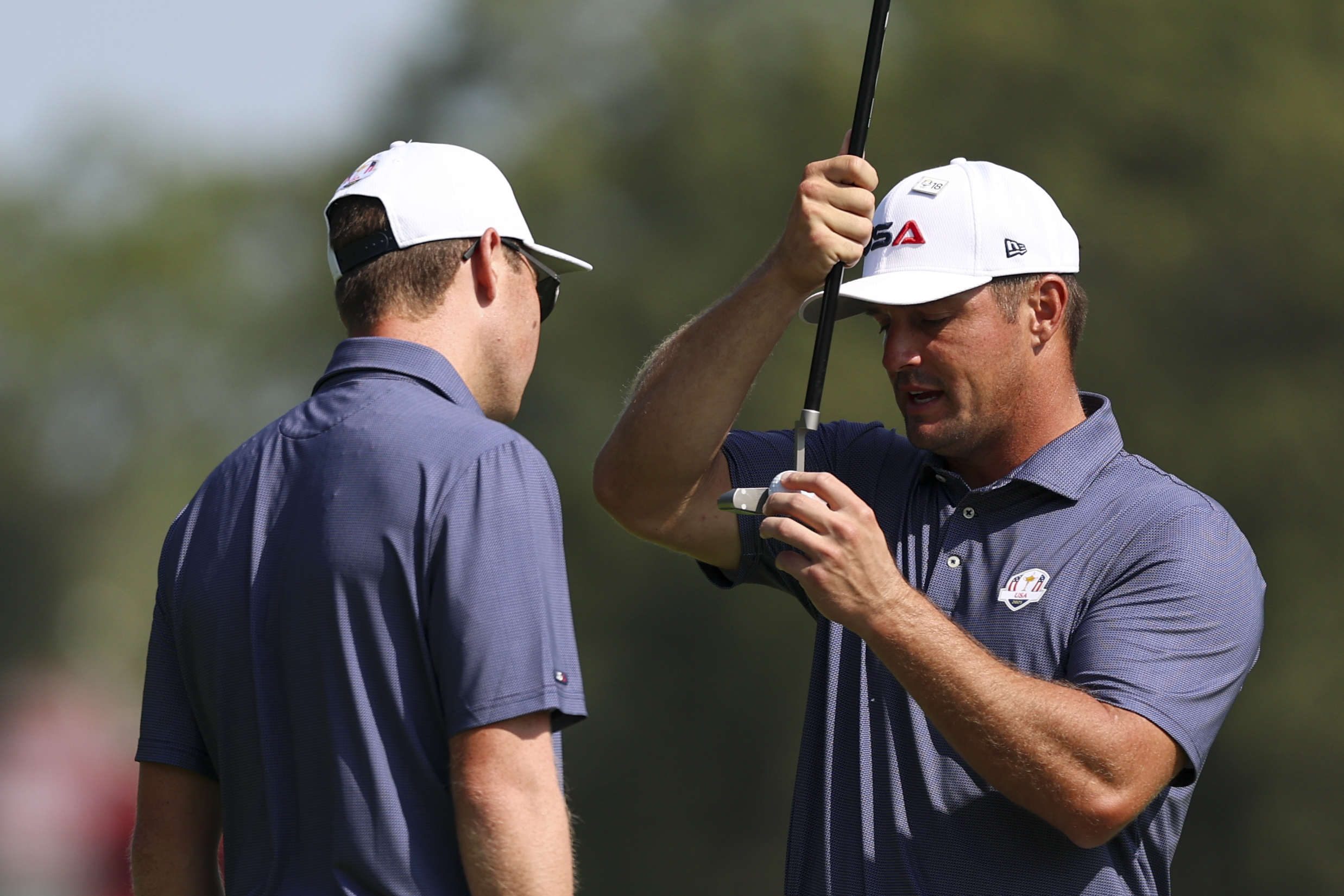Could A Change In Ball Help You Hit It Straighter?
Kick Point duo Dan and Joe have been discussing spin axis on the latest episode of Kick Point and how a change in ball could help reduce your dispersion


Joe Ferguson
Warning. This article gets a little scientific in places - but do stay with us. It’s a fascinating read, and we must thank Golf Monthly reader/Kick Point subscriber, Nick Fields, for asking the following question, which made for a great discussion in the episode below.
Even if you find yourself baffled a little by the science, it'll at least get you thinking about whether you're using the right golf ball for your game - and, if you're not, what your options are.
So, Nick asked: “Given the data available to us regarding golf balls, I was wondering how we can interpret driver backspin and, in particular, how it links to lateral dispersion?
“I realise spin axis tilt is a variable within this but surely a high spin ball will lead to greater dispersion. Does the choice of ball even influence spin axis tilt?”
Over to you, Joe.
“I have a couple of schools of thought on this,” he says. “I’ve always said that spin is your friend. The more backspin you get on your golf ball, the straighter it’s likely to fly.”
Basically, the more time the ball spends spinning backwards, the less likely you are to tilt that spin axis. As Joe says, “it’s why your pitching wedge goes straighter than your 3-iron.”
Subscribe to the Golf Monthly newsletter to stay up to date with all the latest tour news, equipment news, reviews, head-to-heads and buyer’s guides from our team of experienced experts.
Let’s quickly talk about spin, and clear up a myth. There’s no such thing as sidespin in golf. The ball is always spinning backwards. “Never sidespin,” stresses Joe, “just a tilted spin axis with the ball spinning backwards.”
It’s this that will cause your ball to go left or right. Of course, it will vary. A 20-something spin axis might be fairly extreme, but the ball is still going more or less end over end, backwards.
“The conventional thinking has always been that the more it's spinning, the less likely it is to go off line,” explains Joe, former Head Professional at The Celtic Manor Resort.
“However, in theory, once that spin axis is tilted, if you do tilt that off, then the more revolutions you have on that golf ball and the more that will enhance that curvature.”
So, here’s a question, one a lot of slicers out there may be asking. If you’re trying to straighten out that left-to-right shot shape (for a right-hander), do you want a golf ball that spins more?
“If you’re someone who does tilt that spin axis, the spinnier ball you use, in theory, the more curvature you’re going to get, unfortunately,” says Joe.
“If you’re trying to neutralize that shot shape, then the lowest spinning golf balls you can find will certainly be beneficial.”

A lower spin golf ball should help bring in dispersion. But don't forget about the down grain effects moving to a lower spinning golf ball can have.
Here’s the caveat. A lower-spinning ball is going to give you less greenside control and stopping power, so it’s a bit of a balancing act.
Of course, let’s not forget that the delivery of the clubface can also tilt the spin axis - and, believe it or not, the inner material of the ball may not be centered properly.
The level of detail that goes into golf ball production is mind-blowing. Ball thickness, centering, the thickness of the paint to ensure the aerodynamics are the same… take it from Joe who recently visited the TaylorMade ball factory in South Carolina, we’re talking microscopic detail.
Back to the original question(s) from Nick. Does the choice of ball influence spin axis tilt or is that purely on your delivery?
“Purely on delivery,” says Joe, “unless there’s a manufacturing fault.” This has given the Kick Point team an idea (ball cutting episode coming soon).
Another science lesson. This is where things get a bit heavy, as the conversation moves onto the Magnus effect. You can watch Joe’s explanation above, but here’s a basic example.
A guy drops a basketball from the top of a dam (you can find this on YouTube) with no spin. It wobbles a little bit in the air but more or less just drops straight down.
Then, he drops a basketball with a little bit of backspin. It travels for about 40 yards or so and then all of sudden it takes off and ends up about 300 yards away from where it started.
What does this mean? This is all about resistance, and it’s basically what’s happening to your golf ball in the air. So, again, if you want to straighten out your ball flight, playing with one of the best low spin golf balls might help.

We can’t have a technical chat like this and not mention the ‘Scientist’ himself, Bryson DeChambeau, a player who gives the golf ball more attention than anyone else.
In his quest for marginal gains, DeChambeau has been known to dip his golf balls in Epsom salts in order to find their natural center, marking the point on the golf ball where it’s perfectly balanced.
He’ll also look at certain dimple patterns on the ball. In the past, he’s spoken about trying to avoid striking the edge of the dimple with the putter blade, because that can make the ball move off line.
Neurotic? Maybe, but who are we to criticize the two-time Major winner?
And if you asked someone like Robert Rock, who we spoke to recently, whether this was excessive, the Englishman would most likely be of the opinion that golfers of all levels should take more time to learn about the equipment they use.
Rock takes the tools of his trade very seriously, to the point where he’d go out and get his own loft and lie machines, swing weight machines, and gripping station.
Sorry, Nick, we’ve digressed a little. Have a watch of the video above, and keep your thoughts and questions coming in.

Michael has been with Golf Monthly since 2008. A multimedia journalist, he has also worked for The Football Association, where he created content to support the England football team, The FA Cup, London 2012, and FA Women's Super League. As content editor at Foremost Golf, Michael worked closely with golf's biggest equipment manufacturers and has developed an in-depth knowledge of this side of the industry. He's a regular contributor, covering instruction, equipment, travel and feature content. Michael has interviewed many of the game's biggest stars, including seven World No.1s, and has attended and reported on numerous Major Championships and Ryder Cups around the world. He's a member of Formby Golf Club in Merseyside, UK.
- Joe FergusonStaff Writer
You must confirm your public display name before commenting
Please logout and then login again, you will then be prompted to enter your display name.